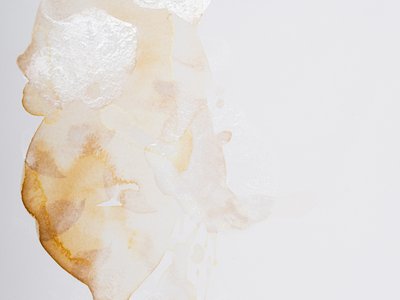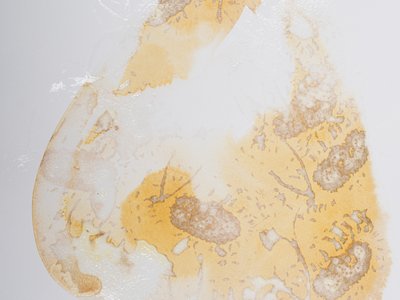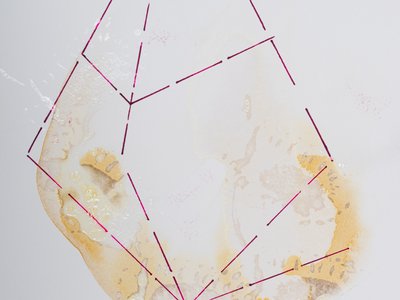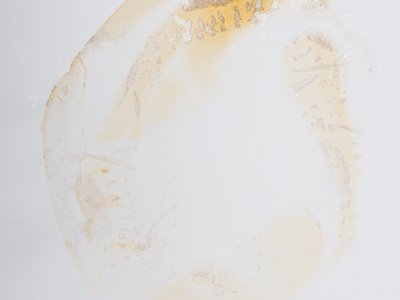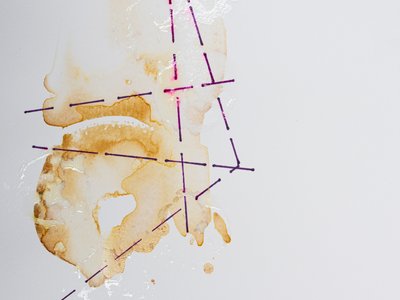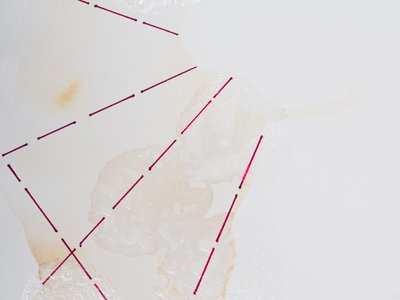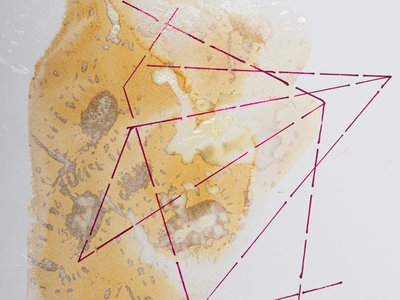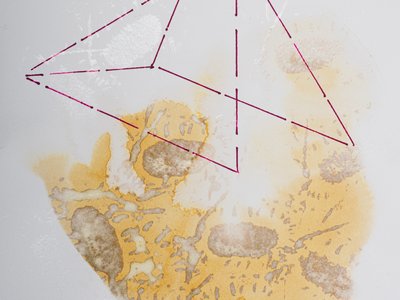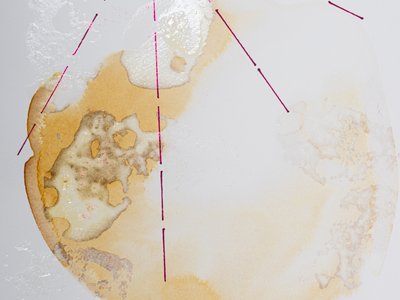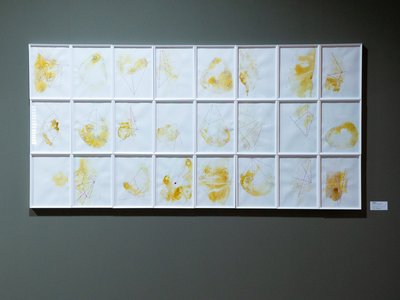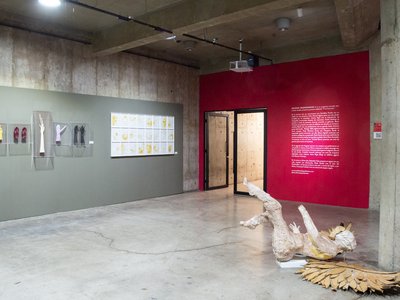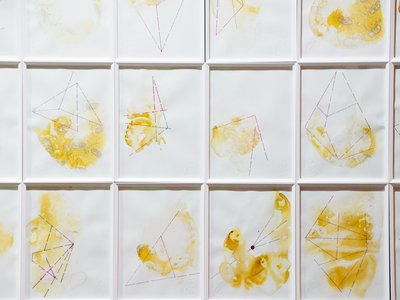Prótesis / Prosthesis
Esta serie nos retrae a lo radiográfico, presenta sus componentes cuales retazos de un cuerpo espectral que se descubre a través del microscopio, del ecógrafo, de la máquina de rayos X. Sin ser precisas, o quizás justamente por eso, rememoran exámenes médicos y pabellones. Son ecos del fantasma de la enfermedad, recuerdo constante de la fragilidad de la condición humana.
Vemos la tensión entre el dibujo orgánico v/s la línea. Esta última intenta contener el desborde de los órganos recién encontrados. Ella también va a ser la guía para el hábil bisturí quirúrgico. La estructura y lo inesperado se conjugan en la repetición traumática de redibujar el órgano dañado. Una imagen imperfecta e inexacta, que intenta repararse a si misma, en el ejercicio vano y absurdo de curar heridas mentales que no cierran, utilizando un antiséptico, el mismo que (no) ayuda a cerrar las cicatrices verdaderas. La pintura, cual prótesis fallida, no logra restaurar el funcionamiento normal de un cuerpo irreal.
La povidona tiene la característica que va perdiendo su color con la luz y con el tiempo. Algo similar a lo que ocurre con las cicatrices. Así el papel deviene en piel, la pintura en vísceras, la raya en corte. El tiempo latente que demora en desaparecer la mancha pintada es metafórico al tiempo necesario para la recuperación, lo que se conoce como convalecencia. La frontera entre enfermo y sano, entre interior y exterior va a terminar por disolverse, a la par de la evanescencia de la imagen.
This series takes us back to a radiographic aesthetics, presenting its fragments as a spectral body that is discovered through the microscope, the ultrasound machine, the X-ray machine. Without being precise, or perhaps precisely because of that, they recall medical examinations and hospitals wards. They are echoes of the ghost of illness, a constant reminder of the fragility of the human condition.
We see the tension between the organic drawing v/s the line. The latter tries to contain the overflow of the newly found organs. It will also be the guide for the skillful surgical scalpel. The structure and the unexpected come together in the traumatic repetition of redrawing the damaged organ. An imperfect and inaccurate image, which tries to repair itself, in the vain and absurd exercise of healing mental wounds that do not want to heal, using an antiseptic. The painting, like a bad prosthesis, fails to restore the normal functioning of an unreal body.
Povidone has the characteristic that it loses its color in light and over time. Something similar to what happens with scars. Thus, paper becomes skin, the paint becomes viscera, the line becomes a cut. The latent time it takes for the painted stain to disappear is metaphorical for the time necessary for recovery, which is known as convalescence. The border between sick and healthy, between interior and exterior will end up dissolving, along with the evanescence of the image.
FICHA TÉCNICA
Povidona yodada sobre papel, técnica mixta, 24 x 32 cms, 2022.
Expuesto en Centro Cultural Matucana 100, 2023.
Mix media, povidone and cotton paper, 24 x 32 cms, 2022.
Exhibited in Centro Cultural Matucana 100, 2023.
https://www.m100.cl/archivo/2023/artes-visuales-2023/v-en-concreta/
